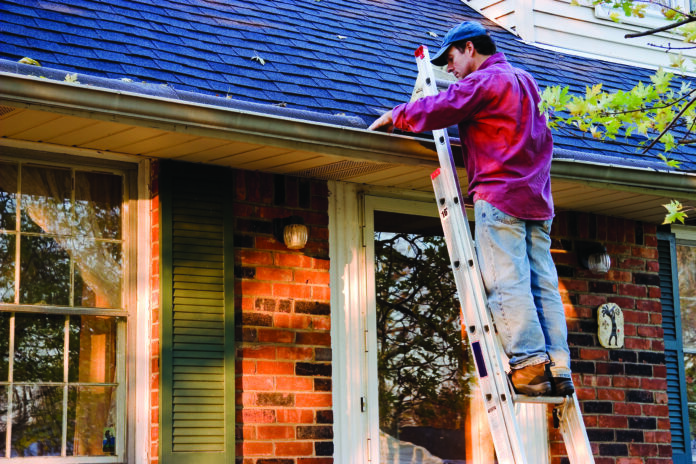Single-digit temperatures and freezing water can wreak havoc on your home. The first thing to know is that water damage – particularly damage linked to frozen and burst pipes – accounts for the lion’s share of homeowner insurance claims.
During the winter months, it’s a good idea to wrap your pipes and keep the heat at a temperature of at least 65°F if you have any concerns about freezing pipes. It’s also essential to know where your home’s water shutoff is located so you can quickly shut it off in an emergency.
Following these important basic steps may stave off catastrophic water damage. But there’s still money to be saved, and water calamity avoided, by addressing other problem spots in and around your home.
1. Protect Indoor Pipes
According to Home Advisor, a burst pipe can cost $500 to repair and can cause as much as $3,000 in additional damage. Pipe insulation, which you can install yourself around any exposed copper or PVC water pipe, costs as little as 50 cents per linear foot. Use it under sinks, in attics and crawl spaces, and on pipes along exterior walls. Pay special attention to basements, where 37 percent of all burst pipes occur.
2. Insulate Your Attic or Crawl Space
Spending money to insulate your attic will save you money in the long run in two ways. You’ll keep your home’s heat out of the attic and in living quarters, where it belongs, and by keeping the attic cooler, you may prevent damaging ice dams from forming on your roof.
3. Service Your Furnace and Chimney
Fireplaces, chimneys, and heating equipment are some of the biggest causes of home fires, according to the Consumer Product Safety Commission. Have them serviced and inspected annually. Make sure the inspector examines the condition of the chimney – brick periodically needs upkeep to prevent water from leaking in – as well as the cap, which keeps heat-seeking animals out.
4. Swap In Storm Windows
Remove and store all window screens. Install glass storm windows, creating an insulating layer of air between your windows and the cold outside air. These also provide an added layer of protection against driving rain and snow during a heavy storm.
5. Repair Loose Roofing Shingles
If you suspect your roof has loose, damaged, or missing shingles, have a licensed roofing contractor do an inspection and make repairs before the first snow. A single cubic foot of snow weighs roughly 20 pounds. That pressure can cause loose shingles to shift further, allowing water or moisture to permeate your roof and leak into your home.
6. Clean and Inspect Gutters
Clogged gutters can cause water to back up and then freeze once temperatures drop. Keep gutters clear and properly connected to ensure that melting snow runs off your roof and through downspouts.
7. Secure Outdoor Water Sources
Drain and store any garden hoses or sprinklers before the first frost to eliminate the chance that they’ll freeze and burst. For hose bibs, shut off the water-supply valve inside your house or basement that feeds the line, then open the outdoor spigot (any water trapped inside will drain out). If you simply shut off the spigot itself, trapped water can freeze and cause a burst pipe inside.
Protecting Your Home from Winter Water Damage
RELATED ARTICLES


